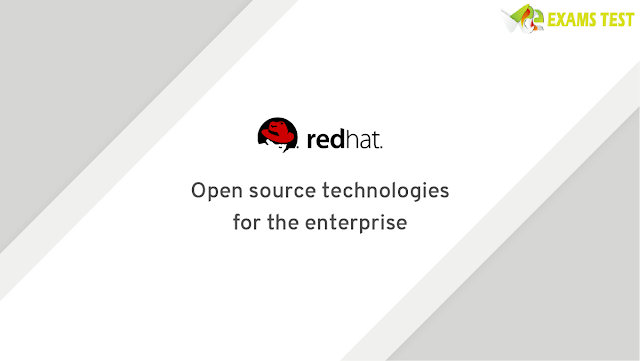Red Hat Certified System Administrator (RHCSA) Exam EX200 RedHat Practice Exam Questions
Red Hat’s leading Linux and Kubernetes platforms now available on NVIDIA® DGX-1™ systems, companies extend open source community collaboration to help power new workloads like artificial intelligence
Red Hat, Inc. (NYSE: RHT), the world's leading provider of open source solutions, today announced it is collaborating with NVIDIA to bring a new wave of open innovation around emerging workloads like artificial intelligence (AI), deep learning and data science to enterprise datacenters around the world. Driving this effort is the certification of the world’s leading enterprise Linux platform, Red Hat Enterprise Linux, on NVIDIA® DGX-1™ systems. This certification provides a foundation for the rest of the Red Hat portfolio, including Red Hat OpenShift Container Platform, to be deployed and jointly supported on NVIDIA’s AI supercomputers.
Red Hat Enterprise Linux’s enablement of NVIDIA GPUs on our Sierra supercomputer provides commonality across our systems, greatly facilitating our users’ ability to exploit the world's third fastest computer.
AI is often looked at as an enabling technology for enterprises seeking to gain a competitive edge and market differentiation through digital transformation. Research firm Ovum1 highlights the growing interest in AI, stating that, “The proportion of enterprises with active interest in AI initiatives (i.e., planning, trialing, or deploying) shifted from 62% last year to 77% this year [2018].”
As NVIDIA DGX-1 systems enter the datacenter to provide powerful AI platforms, IT teams will often want to manage and maintain these systems within their existing operations, which frequently are Red Hat Enterprise Linux-based. The ability to use Red Hat Enterprise Linux on NVIDIA DGX-1 hardware provides not only a familiar control plane and SELinux-secured user environment for IT teams to weave into their existing workflows, but can also serve as a catalyst to drive further innovation with AI and deep learning.
Enterprises across many industries, including those in the public sector, oil and gas, financial services and more, will now be able to more effectively integrate NVIDIA architecture into existing infrastructure environments with Red Hat Enterprise Linux acting as the common “bridge.” In support of greater flexibility across enterprise environments, current Red Hat Enterprise Linux customers will be able to use existing subscriptions on NVIDIA DGX-1 systems, backed by both Red Hat and NVIDIA. Additionally, organizations using Red Hat Enterprise Linux on NVIDIA DGX-1 systems will also have a foundation for the industry’s most comprehensive enterprise Kubernetes offering in Red Hat OpenShift Container Platform, extending cloud-native support to emerging workloads.
ISVs can move existing Red Hat Enterprise Linux-certified applications to NVIDIA’s new class of systems with little-to-no changes, gaining easier access to advanced AI and deep learning capabilities to support more intelligent workloads.
In the realm of high-performance computing, Red Hat and NVIDIA deliver technologies and expertise to fuel two of the world’s fastest supercomputers, Summit and Sierra. As part of a broader group of industry leaders, Red Hat helped bring both of these systems online providing a model not only for next-generation high-performance computing (HPC) in performance-sensitive environments but also for the enterprise datacenter of the future.
Beyond Red Hat Enterprise Linux certified and supported on NVIDIA DGX systems, the companies intend to collaborate on broader open source initiatives, including:
- NVIDIA GPU Cloud (NGC) containers on Red Hat OpenShift - Red Hat and NVIDIA plan to deliver NGC containers that provide users with GPU-optimized software tools for AI and HPC based on Red Hat technologies, enabling mutual customers to take full advantage of NVIDIA GPUs.
- Heterogeneous memory management (HMM) - Red Hat and NVIDIA plan to continue upstream development of the heterogeneous memory management (HMM) feature. This kernel feature allows devices to access and mirror the content of a system’s memory into their own, enabling significant performance improvements for applications using GPUs.
Red Hat at GTC DC
To learn more about how Red Hat and NVIDIA align on open source solutions to fuel emerging workloads, visit Red Hat (booth #44) at the GPU Technology Conference (GTC) in Washington, D.C., from October 23-24, 2018. At the event, Red Hat and NVIDIA will also jointly present a “Best practices for deploying Red Hat platforms on DGX systems in datacenters” on Tuesday, October 23, 3:30PM - 4:20PM.
Red Hat EX200 Exam Preparation Resource Guide
VCEEXAMSTEST offers RHCSA EX200 Exam PDF Questions Answers that will help you pass Real Red Hat EX200 Exam in your first attempt. Our experts have compiled the Red Hat exam EX200 Red Hat Certified System Administrator real questions and answers which will help you pass Red Hat EX200 Exam. VCEEXAMSTEST offering you two types of VCE products, Red Hat Certified System Administrator EX200 PDF format and Red Hat Certified System Administrator EX200 Practice Exam Software. Both these VCE products are different in their specifications but their features are shared. In VCE Exam Software you can practice your exam with real scenarios. Because Hands-on practice is the best way to cement what you learn from Red Hat Certified System Administrator Exam EX200 Dumps. Get most EX200 Dumps Practice Exam Questions with 100% accurate answers. Hence, you will just pick any of VCE products and begin preparing with best resource for Red Hat Certified System Administrator Red Hat EX200 Exam preparation. Download RHCSA EX200 Exam PDF Questions Answers that will help you pass Red Hat EX200 Exam RHCSA in first attempt.

